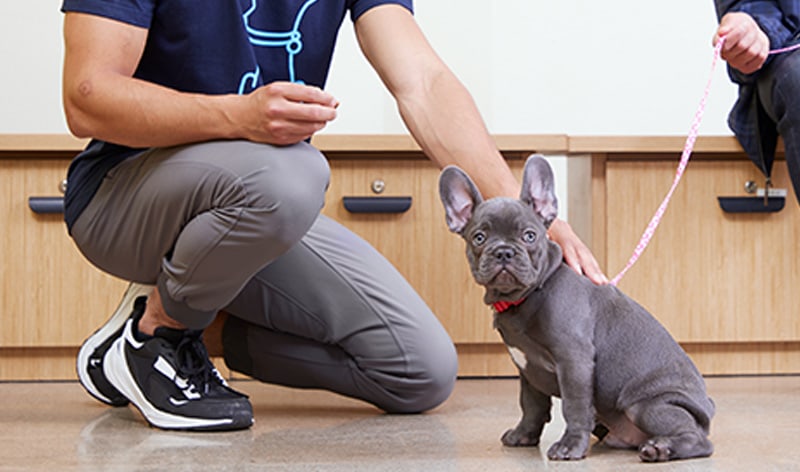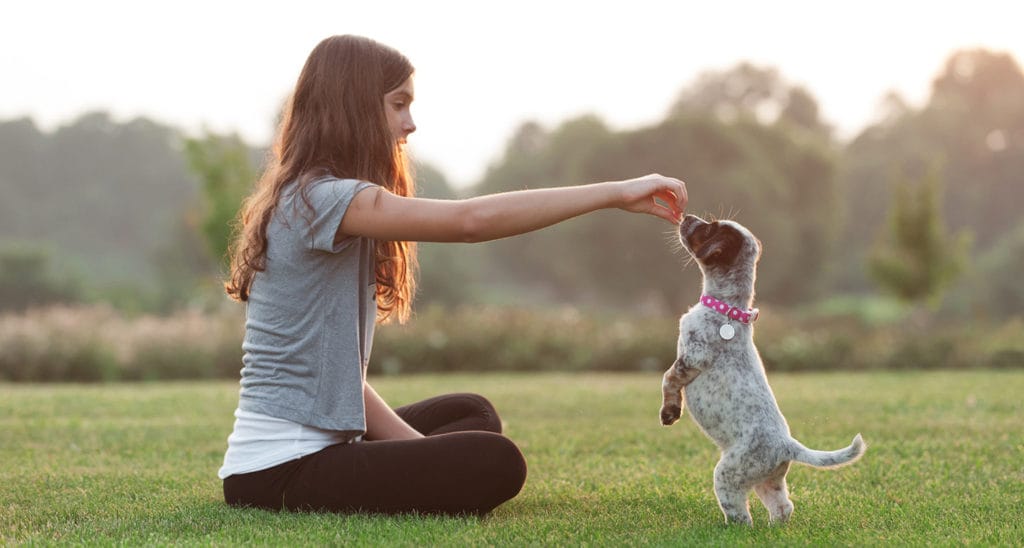Puppy Training Techniques: Teaching Basic Commands for a Happy Pet
Puppy Training Techniques: Teaching Basic Commands for a Happy Pet
Blog Article
Leading Pup Educating Strategies to Make Certain a Mannerly Pet Dog
Reliable pup training is critical for growing a mannerly companion, and various strategies can considerably affect a pet's growth. As we discover these approaches even more, it ends up being clear that the success of puppy training pivots on a combination of approaches that can change your pet's behavior in remarkable methods.
Positive Reinforcement Strategies
Making use of positive reinforcement methods is essential for effective young puppy training, as it urges desired behaviors with benefits as opposed to penalty. This method maximizes the natural discovering procedures of pet dogs, strengthening etiquette by giving instant and tangible rewards, such as treats, praise, or play. By linking favorable end results with details actions, young puppies are more probable to duplicate those behaviors in the future.
Benefits must be offered instantly after the preferred habits happens to produce a clear connection in the young puppy's mind. Furthermore, varying the types of incentives can maintain a puppy's interest and motivation throughout the training process.

Consistency in Training Commands
Maintaining uniformity in training commands is vital for reinforcing the lessons discovered via favorable support techniques. Pets thrive on routine and predictability, so using the same verbal commands and hand signals for details actions is vital. This uniformity aids pups recognize what is expected of them, decreasing confusion and frustration for both the animal and the trainer.

Timing also plays a significant role in uniformity. Commands must be supplied promptly throughout training sessions and adhered to right away by favorable support, such as treats or praise. This instant response aids strengthen the organization between the command and the wanted behavior.
Incorporating consistency right into training sessions will certainly develop a steady knowing setting, advertising quicker proficiency of commands. Eventually, a well-structured strategy promotes a strong bond between the puppy and its owner, resulting in a much more loyal and well-behaved family pet.
Socializing With Various Other Pets
Socializing with various other pet dogs is essential for a puppy's development, as it aids them discover appropriate behaviors and interaction abilities in diverse social contexts. Early interactions with different pets can significantly influence a puppy's character and versatility in numerous circumstances. When pups are subjected to a variety of pets, they become extra certain and much less scared, which can protect against prospective behavioral problems later on in life.

Instruct your puppy to recognize signals from various other pet dogs, such as indications of playfulness or discomfort, promoting common respect and understanding. Routine socializing not just improves your pup's social skills yet also adds to their general wellness, creating an extra unified living setting.
Crate Training Benefits
Acknowledging the various benefits of crate training can substantially boost both the puppy's and owner's experience. Crate training gives a safe and safe and secure setting for puppies, guaranteeing they really feel safeguarded when left alone. This sense of security can substantially lower anxiousness and stress levels for both the family pet and the proprietor.
In addition, cages function as a useful house-training tool. Young puppies normally prevent dirtying their sleeping location, therefore urging them to hold their bladder until they are let outdoors. This reaction can accelerate the house-training procedure, fostering great practices early.
Crate training likewise helps in taking care visit the site of a young puppy's actions when unsupervised. By giving a marked space, owners can avoid destructive habits, such as eating on furnishings or getting involved in unsafe compounds. Additionally, cages can be helpful during traveling, supplying an acquainted area that can aid soothe a young puppy in brand-new settings.
Last but not least, developing a dog crate routine encourages self-reliance, enabling pups to find out exactly how to be alone without worry. In general, pet crate training is an effective method for promoting safety and security, self-control, and harmony, resulting in a well-adjusted, well-behaved animal.
Chain Training Essentials
Leash training is a fundamental element of accountable pet possession that guarantees a delightful and risk-free strolling experience for both the pup and its proprietor. Correct chain training starts early, ideally during the pup's socializing period. When out in public., this training assists establish good behaviors and promotes favorable actions.
To begin, choose a comfortable collar or harness that fits your young puppy well. Affix a sturdy leash, guaranteeing it is not as well long, as this can lead to drawing and irregular behavior. Begin in a silent setting to lessen diversions and gradually present your puppy to brand-new environments.
Usage favorable reinforcement strategies, such as deals with and praise, to urge your young puppy to stroll beside you. If your young puppy pulls, quit strolling and wait for them to return to your side before continuing.
Furthermore, integrate short training sessions with enjoyable diversions to develop Source your young puppy's emphasis. With devotion and determination, leash training will cause an accommodating buddy, making strolls enjoyable for both the pup and the owner.
Conclusion
In conclusion, using effective young puppy training methods is essential for establishing a well-behaved pet. On the whole, these methods collectively promote a harmonious relationship between young puppies and their proprietors.
As we discover these methods better, it becomes clear that the success of young puppy training hinges on a mix of methods that can change your pet dog's actions in exceptional methods.
Using positive support strategies is crucial for efficient puppy training, as it motivates preferred behaviors through rewards rather than punishment.Crate training also wikipedia reference aids in taking care of a young puppy's behavior when not being watched.Leash training is a fundamental aspect of liable pet dog possession that guarantees a safe and pleasurable strolling experience for both the young puppy and its owner.In final thought, utilizing efficient young puppy training strategies is critical for creating a mannerly family pet.
Report this page